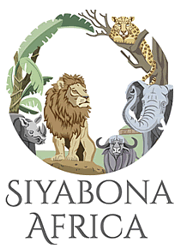
Name
Duiker [Sylvicapra grimmia]Description
The Duiker gets its name from the Afrikaans word 'duiker' which means to dive, relating to the animal's habit of ducking away into bushes when danger threatens. They can live independently of water and feed on leaves, fruit and seeds. They are one of the very few antelope to have been known to eat insects and carrion.
Appearance
What is a Duiker?
The common, or grey, Duiker is a tiny, shy antelope with only the males having short horns. The common name refers to a characteristic habit of taking off at high speed in a series of diving jumps when alarmed.
Adult males stand 500mm at the shoulders and females are about 20mm higher. Males have a mass of between 15 and 18 kg, females between 16 and 21 kg.
The colour of the upper parts varies from a greyish-buff in (S.g. caffra) to a reddish-yellow in (S.g. splendidula) Considerable colour variation within populations are observed in some areas. The under parts are usually white. Most have a black band restricted to the lower part of the face near the nostrils.

Diet
What do Duiker eat?
Duiker browse a wide range of broad-leaved forbs, trees and bushes, they also eat fruit, pods and seeds, roots, bark, flowers, fungi, caterpillars and even nestling birds. In arid areas wild melons are eaten for their water content. They may be a problem in crops, orchards, vineyards and plantations.
Vital Statistics
- Weight (Female)
- 17 - 25 kg
- Weight (Male)
- 15 - 21 kg
- Length (Female)
- 110 cm
- Length (Male)
- 110 cm
- Gestation Period
- 6 months
- No of Young
- 1 lamb
- Sexual Maturity
- 8 months
- Birth Weight
- 175 g
- Order
- Artiodactyla
- Family
- Bovidae
- Horns
- 10 cm (record - 18 cm)
Breeding
The female will give birth to one young usually after a gestation period of around 6 months. Single lambs, very rarely twins, are born at any time of year, possibly with a peak in summer. Full grown at 7 months, females first mate as early as 8-9 months, and give birth at one year.
Mating system probably varies with locality and habitat from monogamous pairs to males with more than one female. Lambs are born at any time throughout the year. The female hides in very dense vegetation before giving birth.
Although the young are initially hidden by the mother, they are well developed at birth and can run within twenty-four hours.
Behaviour
They are mainly active in late afternoon and into the night with other peak periods in the early morning hours. The males and females are territorial chasing away others only of the same sex Male and females tend to share territories but only come together for mating purposes They are probably the most successful bovid species in Africa.
The lifespan of a Duiker is 8-11 years. They are important prey for medium and large carnivores. They are solitary or a female with a lamb, they are rarely in male-female pairs. Scent-marks are produced by the preorbital glands and glands between the front hooves.

Where Duiker are Found
They do not occur in forests, although they will take refuge in forests when hiding from a predator. Widely distributed in Southern Africa, but absent from desert regions. The Common Duiker is usually seen at dawn and dusk in open scrub country. They avoid open grassland where there is no shelter. They are found throughout Africa south of the Sahara, except in the rain forests of Central Africa.Spoor Description
Has a bigger spoor than the other Duiker species. Some spoors are pointed and some rounded. There would be only 1 or 2 unusual variations.Predators
The Duiker avoids predators by lying quietly or freezing motionless and dashing away at the last moment if approached closely. Runs with a distinctive diving, zig-zag motion from which comes the name duiker, Afrikaans for diver. Uses its horns and sharp back hooves as defensive weapons.
The alarm call is a nasal snort, if caught bleats loudly, a sound that attracts other Duikers, and calls mothers to assist lambs. Lambs can run within a day of birth, but remain hidden in heavy cover, with the mother returning to suckle and clean them.
They are taken by all the medium to large predators but their main predators are Eagles, Leopard, Jackal and Python. Some are taken by Crocodile.

Red Duiker
Read more about the Red Duiker

